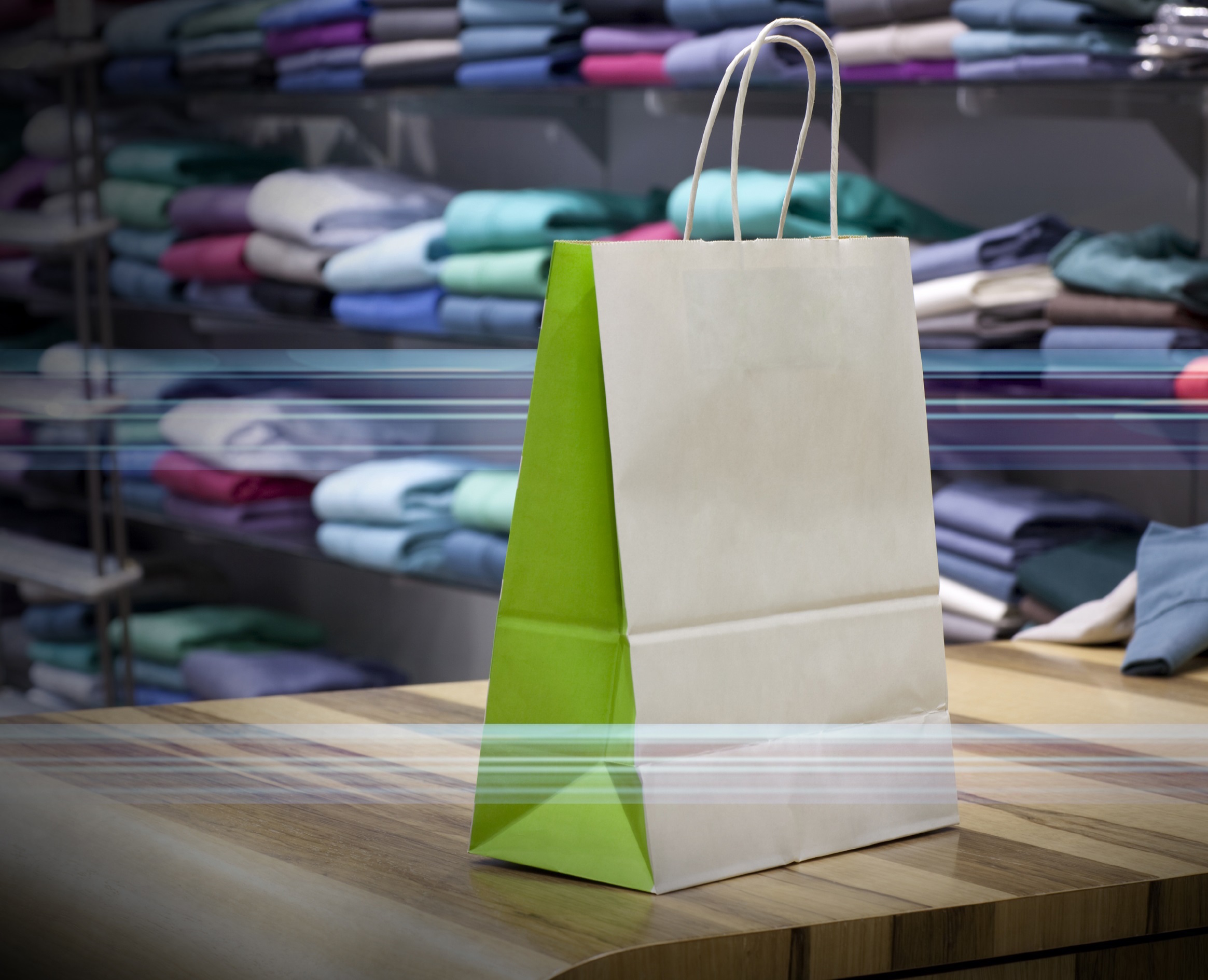Pierbridge sat down with Brian Bourke, VP of Marketing, SEKO Logistics, to discuss the explosion of global retail and eCommerce and how companies can use supply chain strategies to differentiate themselves.
One of the largest drivers in the growth of global eCommerce and parcel shipping is the retail market. Consumers now have more choice when it comes to buying the latest fashion, allowing retailers from around the world to compete in countries that, 10 years ago, they would never dream of setting foot in without some serious financial muscle.
But it’s not all gravy trains to the bank. As more small, medium, and large retailers get online, they become inevitably drawn into delivering to customers across international borders. Competition is fierce. How does one retailer differentiate its Summer 2018 blue shirt and dresses trend from another retailer’s Summer 2018 light-blue shirts and dresses? And then how does a retailer cost-effectively and speedily ship that one T-shirt across a hemisphere?

To dig into the issue, we sat down with Brian Bourke at SEKO Logistics. SEKO, voted one of the Top Ten 3PLs by readers of Inbound Logistics, has been in the game since 1976. Bourke has been in the logistics industry for 12 years, speaks five languages, and has a bachelor’s degree in economics from the University of Wisconsin. He is responsible for marketing SEKO’s global logistics solutions, making him an ideal person to talk about global eCommerce retail shipping.
Let’s start high-level. When it comes to cross-border eCommerce, what have you seen over the last five years and what, in your mind, has helped cause the global eCommerce and parcel shipping explosion?
“Five years ago, cross-border eCommerce was barely on the radar. It was just a blip. Cross-border eCommerce started coming into its own in 2010/2011. If you look at the global financial crisis that hit that year, I think that a lot of retailers realized they needed to increase their revenue by expanding their customer base and one way to do that is to expand the scope of your market. Some European retailers have done a better job than some U.S. retailers and are more naturally internationally focused. You’re seeing a lot of European retailers selling into the U.S. market, whether it’s cross-border eCommerce or opening physical stores or a mix of both. All you have to do is walk down the street and you see Zara stores — they’re Spanish. You see H&M — they’re Swedish. You see Uniglo — they’re Japanese. These fashion retailers have really figured out that speed is where it’s at, as it relates to fashion trends, and especially as it relates to what consumers want today.”
What else do consumers want today?
“Consumers are responding to more availability, more options, more SKU variety, more new and fresh looks and designs. And you can buy from all over the world. Take Australia. It’s 30 million people spread out over a continent the size of the U.S. When you go to a store in Australia, you don’t see a lot SKU variety because it’s very difficult and costly to have a lot of different SKUs in a population and geography as isolated as Australia. Now you open-up cross-border opportunity. You can get items on bulk shipments in the belly of passenger aircrafts, and suddenly you have price points where it makes sense to offer U.S. and Chinese SKU variety to Australian consumers. It’s incredible.
“That’s just a few small examples of why and how the eCommerce explosion started. I mentioned Australia because not only is it very isolated geographically and population-wise, except for major metro areas, it also has the highest di minimis. That’s very important when you’re talking about eCommerce shipments because when the di minimis is high for individual orders, you don’t have to pay any duty. The goods can arrive in a country free and clear for individual orders and not be held up in customs. The U.S. recently raised its di minimis to $800, so that’s going to cover a much larger percentage of total potential cross-border goods, which opens the door to a lot of opportunity as well. I think a lot of U.S. retailers, especially the ones that are growing, see the opportunity.”
Some experts are warning that governments may want to add regulations as global eCommerce continues to grow. Are you concerned about changing regulations?
“I think anytime you have innovation in the business community, it’s often government that has to catch up to the private sector. There’s almost no exception in this case. Will there be some regulatory and/or trade roadblocks? Absolutely. Recent news has been pointing to more of the protectionist side of regulations than the previous 20-30 years, but I think overall, the general trends will continue in the same direction as continued growth. It will just be a matter of how much growth there will be year-over-year.”
Have you seen any signs of global cross-border eCommerce stagnating?
“No, I think it will continue to grow, because the demand is there. You have a rising consumer middle-class in areas like Indonesia, Malaysia, Philippines, Thailand, Middle East, Africa—all around the world you see rising middle class, rising wealth and rising demand for European goods or Japanese goods — and for American goods.”
What do you see as the largest challenge for retailers and shippers today?
“I think the biggest hurdle right now is capacity in the air freight market. There’s a huge supply and demand problem because there are a lot more goods that need to fly air freight than there are planes to fly them. Especially as you get closer to Christmas.”
The online eCommerce retail market is very competitive. How can retail clients use their supply chain to differentiate themselves?
“I’ll give you a perfect example. One of our clients on the cross-border side, MySale, has different business units — it has a sale group for Australia, for New Zealand, and one for Asia. They offer flash deals online, so basically, they are doing bulk purchases on unique SKUs for consumer markets across the southeast Asia region. Now, imagine if you are a consumer in Malaysia and you order from MySale. You get your delivery to your home in five to six days, which, considering it was fulfilled here in the United States, is very impressive. Still, even five to six days in today’s world can seem like a long time. But if you are able to track it along the way, as a consumer you’re happy. And by the way, the tracking is also branded MySale and has ads that point back to MySale, so the entire branded experience is extended all the way through supply chain milestones to delivery."

So essentially, it’s where speed meets branded customer service.
“Exactly. The customers get a very branded logistics experience, they get trust and visibility, and they are much more likely to return. I personally order cross-border eCommerce. I don’t need to — nobody really needs to order cross-border; nobody wakes up and says, ‘I need to order cross-border eCommerce today.’ All they are trying to do is either find something they can’t find in their own market or get a cheaper item from a website in another country.”
Have you ever had a bad eCommerce experience?
“Recently at Christmas, I was trying to find a gift for my brother, who seems to have everything. I do know that he likes Star Wars and he likes cats. So, I Googled Star Wars and cats and, low and behold, a shirt popped up with a cat and a lightsaber, and I ordered it. It took me three weeks to get it. They never communicated to me about delivery times when I checked out. I had to send my brother an email telling him it would arrive after Christmas. Had I known that at checkout, I wouldn’t have purchased the item. I felt like there was a catch-22. I automatically lost trust in the vendor. When that happens, you’re less likely to come back. That should have been communicated early in the shopping cart experience. Not only that, I had no idea when it was going to arrive because it had no tracking or visibility. It went down a black hole of nothingness, so I couldn’t even be hopeful of when to expect it, which added a whole other layer of aggravation.”
And now you’re certainly not going to order from that website again.
“Probably not. You need to provide a positive cross-border experience and then offer that as a differentiator in this global retail landscape. And if you offer a seamless returns process and experience, that can also keep customers coming back. That’s why a lot of retailers now offer unlimited returns or returns up to one year. Return policies are becoming much more relaxed and consumers are responding by coming back. We do a lot of consolidation work and by doing the consolidation work, we offer an express service at an economy rate. And that’s where the real magic happens because when we talk about differentiation, branding is one thing, but it always comes down to cost and speed and we figured out just the right mix to help retailers expand.”
So how is SEKO integrating last-mile parcel delivery to reduce costs and speed up delivery across borders?
“A retailer could just use FedEx for all their shipments – absolutely, they could. But we bundle together with our custom branded technology and single tracking platforms, we’re scanning and labeling for the destination country, postal, courier, or integrator here at origin in the U.S. or UK — wherever the origin is. We’re labeling it, we’re building airline units, we’re tendering the cargo to airlines — it’s flying for the most part in the belly of passenger aircrafts — and it’s being customs cleared at destination and injected into the local courier or parcel service networks, like FedEx, who deliver the last mile. So, there’s a lot of freight that goes along in the background. It’s not like we give it to a DHL and they do all the work. No, we do a lot of consolidation work and by doing the consolidation work, we offer an express service at an economy rate. And that’s where the real magic happens because when we talk about differentiation branding, that's one thing — but it always comes down to cost and speed and we figured out just the right mix to help retailers expand.”
